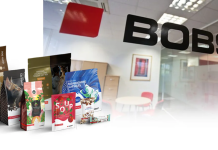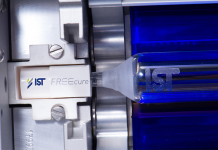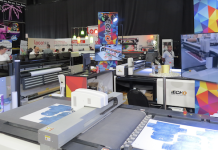GMG was recently presented the opportunity to prove the performance of its software in multicolour solutions at the recent Fogra Multicolor Forum in Munich.
The vendor-neutral comparison with the leading providers in the sector, demonstrated that a clear quality benefit can be achieved when using GMG solutions – particularly for spectral prediction of overprints. In a ‘shootout’, Fogra provided the nine leading technology providers the opportunity to compete in five different disciplines. The vendor-neutral event was aimed at obtaining useful results without selecting a winner.
Nine participants, five disciplines – and demanding tasks for the industry leaders
Creating a characterisation for multicolour profiles, production ECG proofs, and spectral prediction of overprints were part of the tasks. With regard to spectral prediction, the most challenging task, GMG was able to give full rein to the strengths of its patented GMG OpenColor spectral overprint model. The prediction was the closest to the printed result. Similarly, in the separation of spot colours as well as the Adobe RGB images, GMG achieved an ideal result through its approach based on maximum preservation of the overall impression.
GMG produced good quality with proofing. GMG ColorProof led the field in conjunction with GMG ProofMedia premium OBA – both in terms of the measurements obtained by using a media wedge and from a visual perspective. Following the evaluation and presentation of the results, Fogra drew the following conclusion: ‘Multicolor has come of age.’
A patented spectral prediction model is at the heart of the multi-award-winning profiling solution GMG OpenColor, which has set new quality standards for colour management in the field of packaging printing. Spectral modelling offers unprecedented accuracy in the creation of colour profiles. Due to the combination of characterisation data with process parameters for print production, it simplifies the creation of multichannel profiles, which even precisely simulate overprint effects involving spot colours. A further benefit is that only little information is needed to create profiles, such as print control strips, solid-colour fields and screen fields.
Based on the same characterisation, separation profiles can be produced for the GMG ColorPlugin for Adobe Photoshop as well. This allows RGB separations to be performed into multicolour spaces up to 7C. As a result, image data can be flexibly adapted to the printing process in use. Colour reproduction is thereby maintained and the extended colour space fully leveraged. Particularly helpful is the soft-proof preview of the separation, which can be switched on or off at any stage of image processing. This allows users to directly simulate the final result at any stage of editing. With the ColorBoost feature, images can also be given a more saturated and vivid look.





















